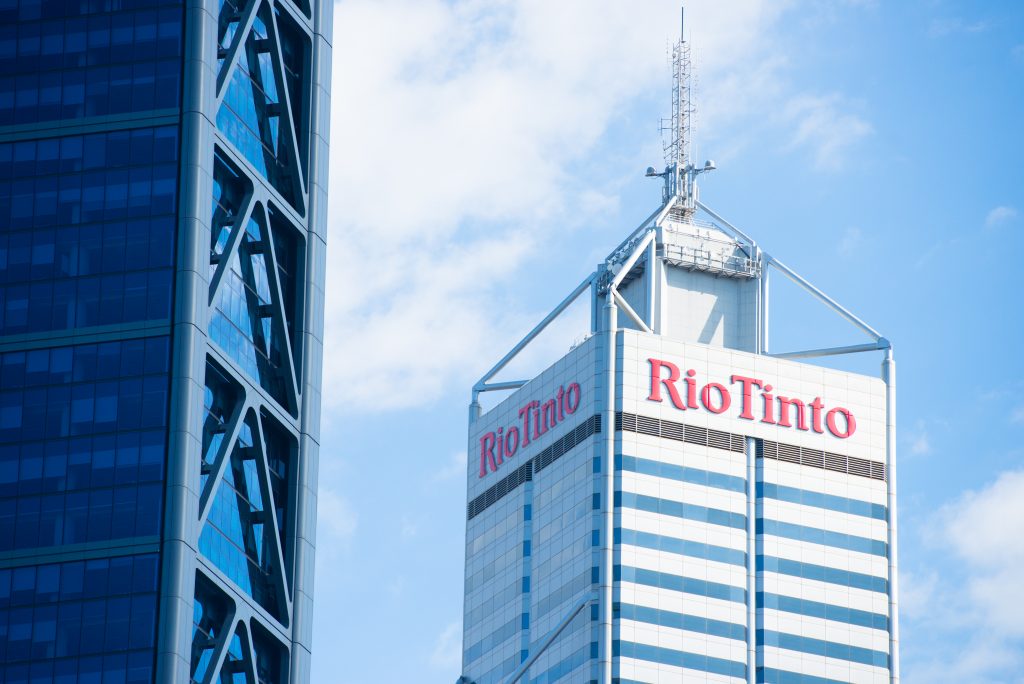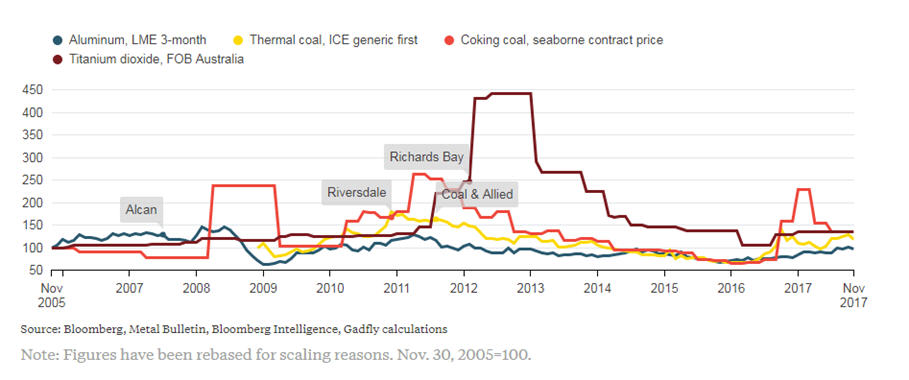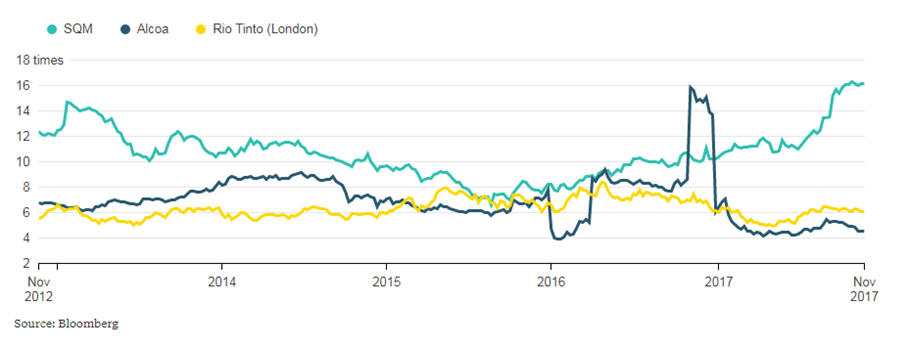Rio Tinto’s M&A madness

Some companies are good at takeovers. Berkshire Hathaway Inc. Chairman Warren Buffett has used well over a hundred acquisitions over decades to help leverage $1,200 of savings from his newspaper round into one of the world’s largest business empires.
Rio Tinto Group isn’t one of those companies. Indeed, it’s hard to find an acquisition since its 2000 takeover of Australian iron ore miner North Ltd. that’s not been a top-of-the-market catastrophe.
That should make investors nervous about the prospect that a big new lithium deal could be forthcoming.
Rio Tinto is working with advisers on a bid for a stake in Soc. Quimica & Minera de Chile SA, people familiar with the matter told Jack Farchy, Dinesh Nair and Thomas Biesheuvel of Bloomberg News on Friday.
SQM, as it’s known, has been on a tear, with shares more than doubling this year alongside a lithium carbonate price that’s tripled since the start of 2013. A purchase of the 32 percent stake held by Potash Corp. of Saskatchewan Inc. would be worth about $4.8 billion at current prices.
If you think you’ve seen this movie before, it’s because you have — and it’s never ended well. Aluminum prices rallied more than 50 percent in the two years before Rio Tinto fended off Alcoa Inc. in a $38.1 billion bid for Canada’s Alcan in 2007. Over the subsequent 24 months, the metal slipped close to its lowest levels in two decades, and Rio ended up being bailed out of its debt problems by Aluminum Corp. of China Ltd.
As if that experience wasn’t enough, management were back three years later for another bite at a hot commodity. With the takeovers of Riversdale Mining Ltd. and Coal & Allied Industries Ltd. in 2010 and 2011, Rio Tinto sought to take advantage of then-booming demand for coking coal (up 62 percent during 2010) and thermal coal (up 50 percent). The former was disposed of three years later for about 2 percent of its $3.7 billion purchase price and is now the subject of a fraud claim by the U.S. Securities and Exchange Commission. Coal & Allied was sold earlier this year at an equity value of about a third what Rio Tinto and its partner Mitsubishi Corp. had originally paid.
Calling the top
Rio Tinto tends to buy into commodities right when prices are about to slump

Even a less prominent deal like the purchase of BHP Billiton Ltd.’s interest in Richards Bay Minerals hasn’t panned out well. During 2011, prices for its main product, titanium dioxide, climbed 43 percent, according to the U.S. Geological Survey. Since the $1.7 billion deal in 2012, they’ve mostly been in an extended slump. Last year, earnings from the division that includes Richards Bay, on South Africa’s east coast, were less than a quarter of their level in the year of purchase.
All this should be a potent reason for Chief Executive Officer Jean-Sebastien Jacques to avoid taking a dip in SQM’s Chilean salt lakes. As Gadfly has argued, the market for lithium isn’t likely to be that tight over the medium term, despite current price exuberance. If Jacques wants to make a bullish bet, he’s far better off spending money on Rio Tinto’s own Jadar deposit in Serbia, which the company claims could be among the world’s biggest.
Granted, Jacques may have learned from his predecessors’ missteps. Getting into SQM’s takeover data room would give Rio Tinto insight into the company’s operations and a better understanding of the still-obscure lithium market in a way that would assist Jadar — a far better bet than an outright takeover, Bernstein analyst Paul Gait argued last week.
Shareholders had better hope that’s right. For the $5 billion or so he would need to buy Potash Corp. out of SQM, Jacques could get a majority stake in Alcoa Inc., a company that Gadfly has contended would have far more attractive prospects. For all Rio Tinto’s problems with aluminum takeovers, the current Alcoa is focused on more attractive upstream assets and generates more than twice SQM’s Ebitda from an enterprise value that’s only two-thirds as big.
Value proposition
In terms of enterprise value to blended forward 12-month Ebitda, SQM looks expensive

Over the years, Rio Tinto’s major acquisitions have proved an eerily prescient contrarian indicator for commodities. When they buy, it’s a good idea to sell.
For the sake of his own reputation and that of his company, the best thing Jacques could do with this deal would be to walk away.
(Story by David Fickling; Editing by Matthew Brooker).
{{ commodity.name }}
{{ post.title }}
{{ post.date }}


Comments